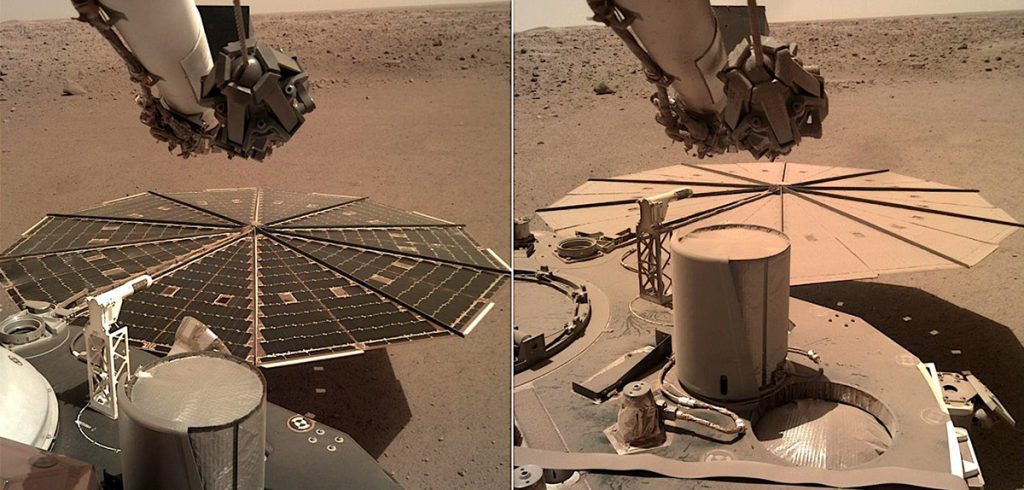InSight mission (Interior Exploration using Seismic Investigations, Geodesy and Heat Transport) for the NASA was permanently suspended in early January, 2023, after four years of operation, having been deprived of its ability to generate solar power due to dust buildup on its solar panels.
The probe was launched in May of 2018, landing on Mars on November 26 of that same year. Its goal was to measure the seismic and thermodynamic variables of Martian soil for two years. Spanish companies took part of its construction.
The constant dust storms on the surface of Mars led to it accumulating on the solar panels that powered the probe until it was unable to continue its mission—a process that begun before the mission was extended in early 2021. The seismometer was the last scientific instrument that remained powered.

NASA’s InSight mission suffered its first crisis related to a dust storm in January of 2022, experiencing a dip in the power generated by its solar panels when a continent-sized dust storm swirled across Mars’ southern hemisphere.
The probe went into “safe mode” to preserve energy by limiting, among other functions, its communications with Earth. Several weeks later once the storm had passed, the panels managed to generate “almost as much energy as before” it.
With the crisis overcome, NASA calculated that the mission could last at least until late summer of 2022. InSight had already met the mission objectives, but those in charge decided to extend it until December, when it ran out of power.
Lastly, the probe sent its final message: “My power’s really low, so this may be the last image I can send. Don’t worry about me though: my time here has been both productive and serene. If I can keep talking to my mission team, I will – but I’ll be signing off here soon. Thanks for staying with me.”





